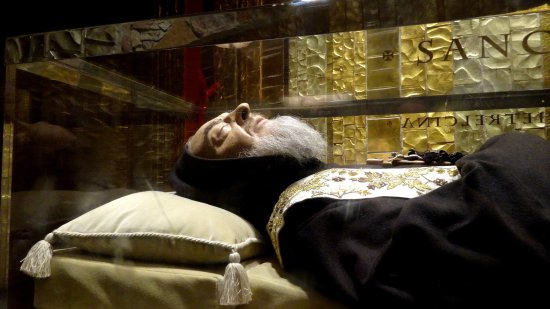Rise up in splendor, Jerusalem! Your Light has come, the glory of the Lord shines upon you. ~Isaiah 60:1
 |
They were men willing to sacrifice
of themselves in order to find a newborn King.
This is a sign of their wisdom:
their willingness to sacrifice.
|
Many Christians around the world annually celebrate Epiphany on January 6. It is a public holiday in many countries and marks when the three wise men, or kings, visited infant Jesus. Three Wise men following the star.
The three wise men's (or kings) visit to the baby Jesus is remembered on the feast of the Epiphany.
AND WISE MEN *STILL* SEEK HIM!
The Epiphany is 12 days after Christmas in the Gregorian calendar, it marks not only the end of the Christmas holidays but also the start of the Carnival season, which climaxes with Mardi Gras. In some European countries, such as the Czech Republic and Slovakia, children dress as the three kings and visit houses. In their roles as the kings, or wise men, they sing about the Jesus’ birth and pay homage to the “King of kings”. They are rewarded with praise and cookies.
Dia de los Reyes Magos is the Latin American celebration of Epiphany.

In many Latin American countries, it is the three wise men and not Santa Claus who bring gifts for children. Children write letters to the wise men telling them how good they were and what gifts they want. In France Le Jour des Rois (the Day of Kings), sometimes called the Fête des Rois, is celebrated with parties for children and adults. The galette des rois, or “cake of kings”, highlights these celebrations. This cake is round and flat, cut into the pantry, covered with a white napkin and carried into a dining room.
Children in Spain fill their shoes with straw or grain for the three kings’ horses to eat and place them on balconies or by the front door on Epiphany Eve. The next day they find cookies, sweets or gifts in their place. The “three kings” make an entry in many cities in Spain on Epiphany Eve, accompanied by military bands and drummers in medieval dress.
What's Open or Closed?
Epiphany is a public holiday in countries such as Austria, Colombia, Croatia, Cyprus, Poland, Ethiopia (but on different date that varies annually), parts of Germany, Greece, Italy, Slovakia, Spain, and Uruguay. It is not a public holiday in Australia, Canada, the United Kingdom and the United States (except the US Virgin Islands where it is a public holiday).
 |
|
The
Epiphany is commonly known as Three Kings’ Day or the Feast of the Epiphany. It means “manifestation” or “showing forth”. It is also called Theophany (“manifestation of God”), especially by Eastern Christians. Epiphany refers not only to the day itself but to the church season that follows it – a season that has a varied length because it ends when Lent begins, and this depends on the date of Easter.
It commemorates the first two occasions on which Jesus’ divinity, according to Christian belief, was manifested: when the three kings (also known as wise men or Magi) visited infant Jesus in Bethlehem, and when John the Baptist baptized him in the River Jordan. The Roman Catholic and Protestant churches emphasize the visit of the Magi when they celebrate the Epiphany. The Eastern Orthodox
churches focus on Jesus’ baptism.
Epiphany is one of the oldest Christian feasts. It was celebrated since the end of the second century, before the Christmas holiday was established. Like other Christian seasons, the church appropriated Epiphany from an old pagan festival. As early as 1996 BC, the Egyptians celebrated the winter solstice (which then occurred on January 6) with a tribute to Aeon, the Virgin. It is important to note that the holiday was established prior to the Gregorian calendar’s introduction.
Symbols
Various paintings, artworks and sketches show the three wise men and Jesus.
Some paintings artworks show the three wise men on the way to Bethlehem or adoring baby Jesus. The kings are important because their visit illustrates that Jesus was the king of all kings who came for the Jews and the Gentiles.
The star that guides the wise men to Christ also symbolizes Epiphany, as well as the three gifts they gave to Jesus:
Gold (fit for a king).
Frankincense (used to worship at a temple).
Myrrh (used for embalming, as well as a salve for irritations such as diaper rash).
Many Orthodox churches consider Jesus’ baptism to be the first step towards the crucifixion. The liturgical color for the Epiphany season is white.
Epiphany (also known as Twelfth Night, Theophany, or Three Kings Day) marks the occasion of a time-honored Christian tradition of “chalking the doors.” The formula for the ritual — adapted for 2018 — is simple: take chalk of any color and write the following above the entrance of your home:
20 + C + M + B + 20.
The letters have two meanings. First, they represent the initials of the Magi — Caspar, Malchior, and Balthazar — who came to visit Jesus in His first home. They also abbreviate the Latin phrase, Christus mansionem benedicat: “May Christ bless the house.” The “+” signs represent the cross, and the “20” at the beginning and the “18” at the end mark the year. Taken together, this inscription is performed as a request for Christ to bless those homes so marked and that He stay with those who dwell therein throughout the entire year.




















